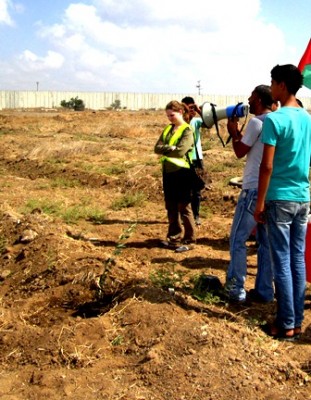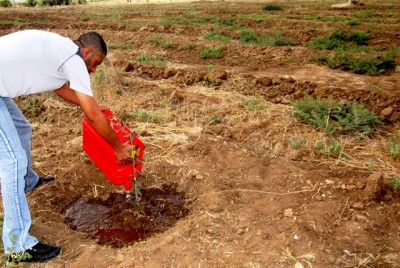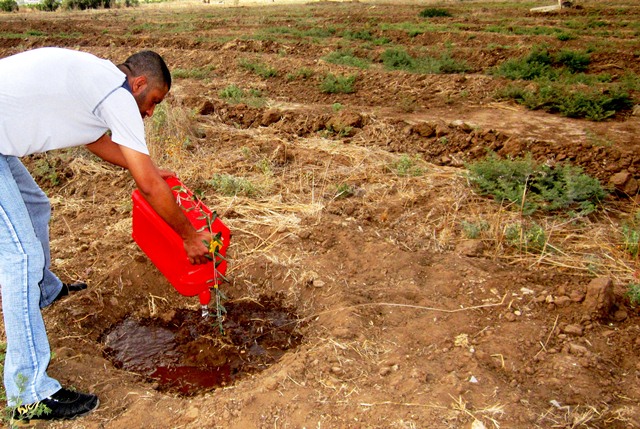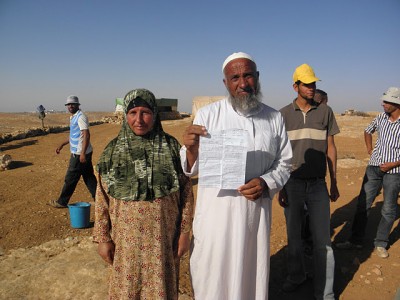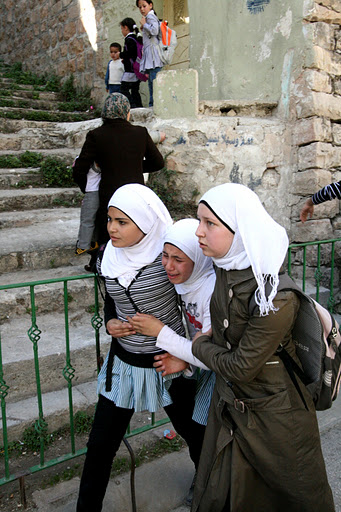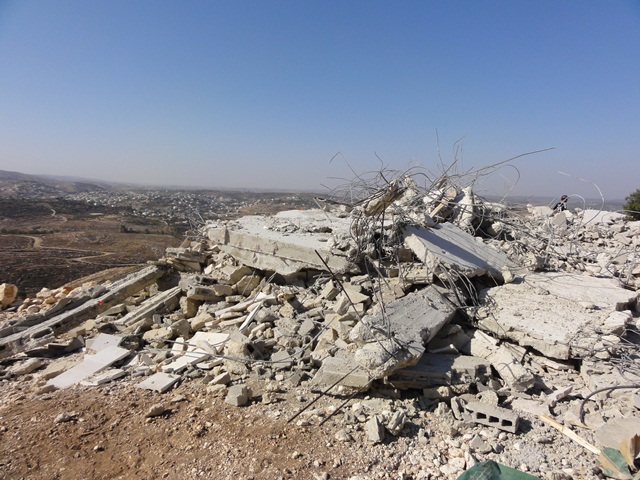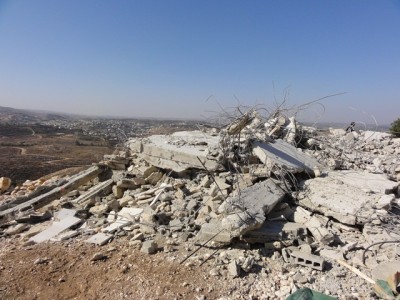8 October 2011 | International Solidarity Movement, West Bank
Israeli military forces fired tear gas canisters directly at protesters and international observers during the weekly demonstration at Nabi Saleh yesterday, 7 October. An international activist sustained a minor wound to the leg after being struck by a tear gas canister fired directly from a distance of around 15 metres by the Israeli military.
Although it is permissible to fire tear gas canisters in an arc to disperse demonstrations, it is forbidden to use them as weapons by firing them directly at protesters. Firing tear gas canisters directly at protesters and at close range turns the canisters into a missile that can maim and endanger life. According to B’Tselem, an Israeli human rights organisation, “Firing of this kind has already resulted in injuries, some grave, to dozens of Palestinians and Israeli and foreign citizens”.
Protests have taken place in Nabi Saleh, a village 20km north-west of Ramallah, every Friday since 2009, when settlers from Halamish, a nearby illegal Israeli settlement, took control of the Ein Al Qaws natural spring belonging to Nabi Saleh and prevented Palestinian access to the spring and the surrounding land.
Yesterday’s demonstration started in Nabi Saleh at 12:30pm as around 50 protesters marched out of the village via the main road. The Israeli army fired several rounds of tear gas canisters in an arc towards the peaceful protesters as soon as they were in sight, deploying a gun mounted on a truck which is able to fire multiple canisters in quick succession. Several people suffered severe gas inhalation, with one female protester carried to a Red Crescent ambulance.
After the initial barrage of tear gas canisters had ceased, many protesters regrouped and attempted to continue the peaceful demonstration, whilst some youths spread out across the hills and threw stones at the military. The Israeli military responded with rubber bullets, tear gas and foul-smelling ‘skunk water.’ At one point, two Israeli jeeps sped towards protesters; soldiers jumped from the vehicles and deployed sound bombs in an apparent attempt to make arrests. However, they made no arrests and were forced to retreat swiftly under a hail of stones.
As the afternoon progressed, the Israeli military gradually pulled back to a watchtower and small military complex near to the intersection of the main road which passes the Israeli settlement and the road leading up to Nabi Saleh. As protesters and international observers neared the watchtower, Israeli soldiers fired tear gas canisters directly into the crowd in an attempt to hit protesters and cause maximum harm. An international activist received a glancing blow and was cut on the leg by a canister. The wound was relatively minor but would have been much graver if the canister had directly hit the activist.
The number of protesters dwindled as dusk fell, with mostly children remaining. Some protesters continued to throw stones, whilst the Israeli military continued to fire rubber bullets and tear gas canisters, which became difficult to see in the fading light. The protest ended around 17:45.
A report published in September 2011 by B’Tselem details how Israeli security forces violate the right to protest at Nabi Saleh as the military prevents demonstrators from reaching their natural spring, a main source of water for locals, and through “declaring the demonstration illegal at the outset, sometimes even before the procession begins.” The report also outlines the harm done by the Israeli military to the inhabitants of Nabi Saleh through the disproportionate handling of the demonstrators which “intimidates hundreds of villagers and forces them to remain in their houses for many hours, making it impossible for them to lead a normal life. The massive amounts of tear gas fired penetrate the houses close to the main intersection in the village and the occupants are unable to escape”.
